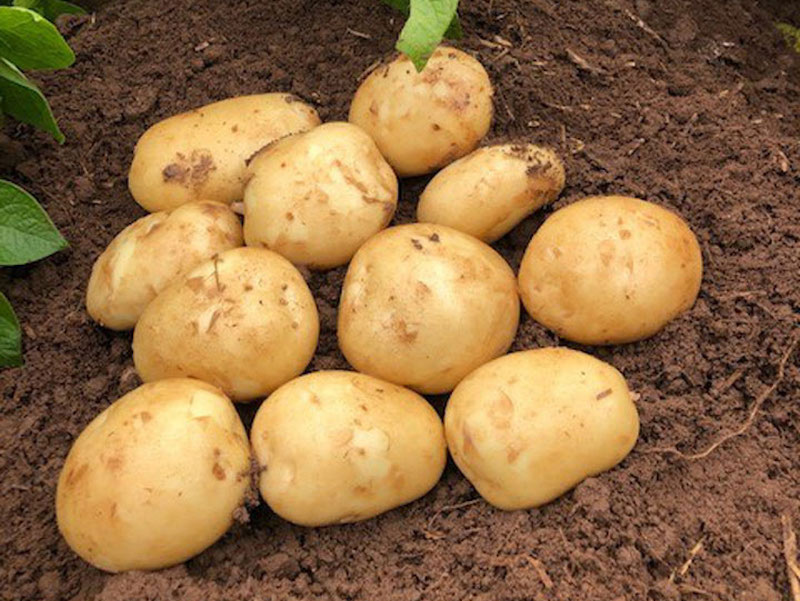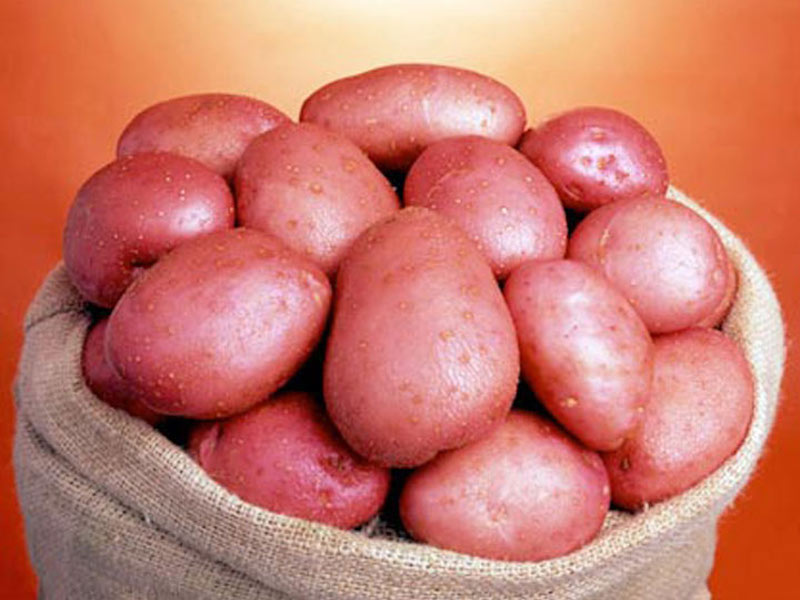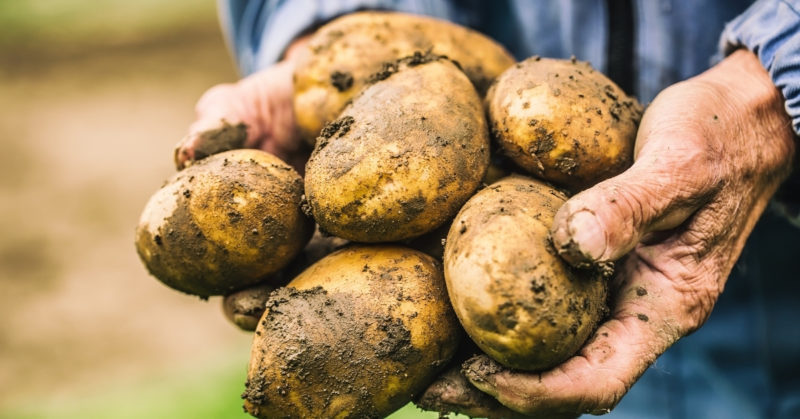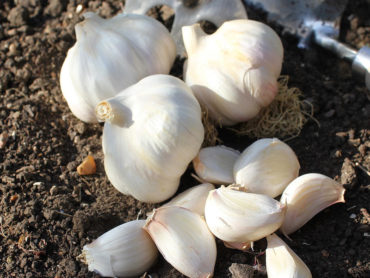Potato blight, also known as ’late blight’ attacks both potatoes and tomatoes, causing them to rot. You can’t treat the problem once it develops, but you can help to prevent this devastating fungal disease by giving your plants plenty of space, rotating your crops regularly and destroying any infected plants as soon as symptoms appear.
Here are our top tips for preventing late blight.
What is potato blight (late blight)?
Sometimes known as ‘water mould’, potato blight is caused by the air-borne spores of Phytophthora infestans.
The initial infection can come from a local source but the spores can also travel for many miles on the wind. Plants are infected when the spores land on wet foliage and the disease spreads rapidly when conditions are warm and moist. Rain washes the spores from the leaves down into the soil where they infect the tubers, causing them to rot.
Spores can survive the winter in infected potato tubers left in the soil. The disease can also survive in tubers saved to replant the following year. That’s why it’s always best to start with new seed potatoes, bought from a reliable source.
How to recognise potato blight

Image: Seed Potatoes – Acoustic (Maincrop) from Suttons
Usually the first sign that your potatoes have been infected are the round, dark brown patches that appear on the leaves. These patches spread quickly, shrivelling and blackening the entire leaf. The stems develop brown lesions and the plant collapses into a rotting mass within a few days.
When the spores are washed down into the soil, they infect the tubers and cause dark and sunken areas on the surface. A red-brown rot starts just under the skin of the potato and eventually works its way to the centre, making it soft and foul-smelling. Even healthy looking tubers may rot later when in storage.
Tips for preventing potato blight

Image: Seed Potatoes ‘Setanta’ from Suttons
- Plant certified, good-quality tubers from a reputable supplier.
- Rotate your potato crops regularly to avoid planting close to tubers that may have been accidentally left behind.
- Grow early varieties – this allows you to harvest a good crop before blight strikes.
- Choose a blight-resistant variety.
- Water your plants early in the morning and avoid wetting the foliage.
- ‘Earthing up’ or mulching the soil with thick layers can reduce tuber infection.
- If blight strikes, cut away all infected material immediately and burn.
- Don’t wash potatoes that are to be stored. Remove any infected tubers and check stored potatoes regularly.
- If you’ve had an infected crop, try growing your potatoes in containers of fresh soil for a few seasons.
Best blight resistant potato varieties

Image: Seed Potatoes – Blight Tolerant Collection from Suttons
Originally bred behind the “Iron Curtain” where growers had no access to fungicides and the winters were long and hard, potato varieties were prized for outstanding blight-resistance and long term storage capabilities. Constantly being improved, here are five of the best seed potatoes to grow if your area suffers from blight:
1: Setanta: Red skinned maincrop with perhaps the highest blight tolerance of any potato. Superb tasting and easy to grow. Ideal for a jacket, roast and chips.
2: Nicola: Colour – yellow. Shape – long oval. This tasty ‘new’ salad potato variety has a waxy flesh and produces a high yield. Stores well.
3: Cara: This popular maincrop variety produces high yields of large, round tubers with excellent resistance to disease. It stores well and makes very tasty mashed and baked potatoes.
4: Acoustic: A great all-rounder with cream-coloured flesh, ideal for organic gardeners. This new maincrop variety is a heavy cropper with excellent blight resistance.
5: McCain ‘Premiere’: Part of our blight resistant collection. Waxy, thin-skinned tubers with excellent scab and blight resistance along with a delicious flavour. Perfect for salads, chips, jackets and creamy mash.
We hope your potato crops won’t succumb to blight, and that by spotting the signs early, you can prevent the spread of a new infection before it takes hold.
Last Updated on May 23, 2025 by Suttons Horticultural Team





Morning. Is there somewhere I can buy a set of each of all 5 blight resistant seed potatoes, please? I would like to try and see which are best in my heavy and usually wet clay soil. Thank you. Regards, Jill Martin